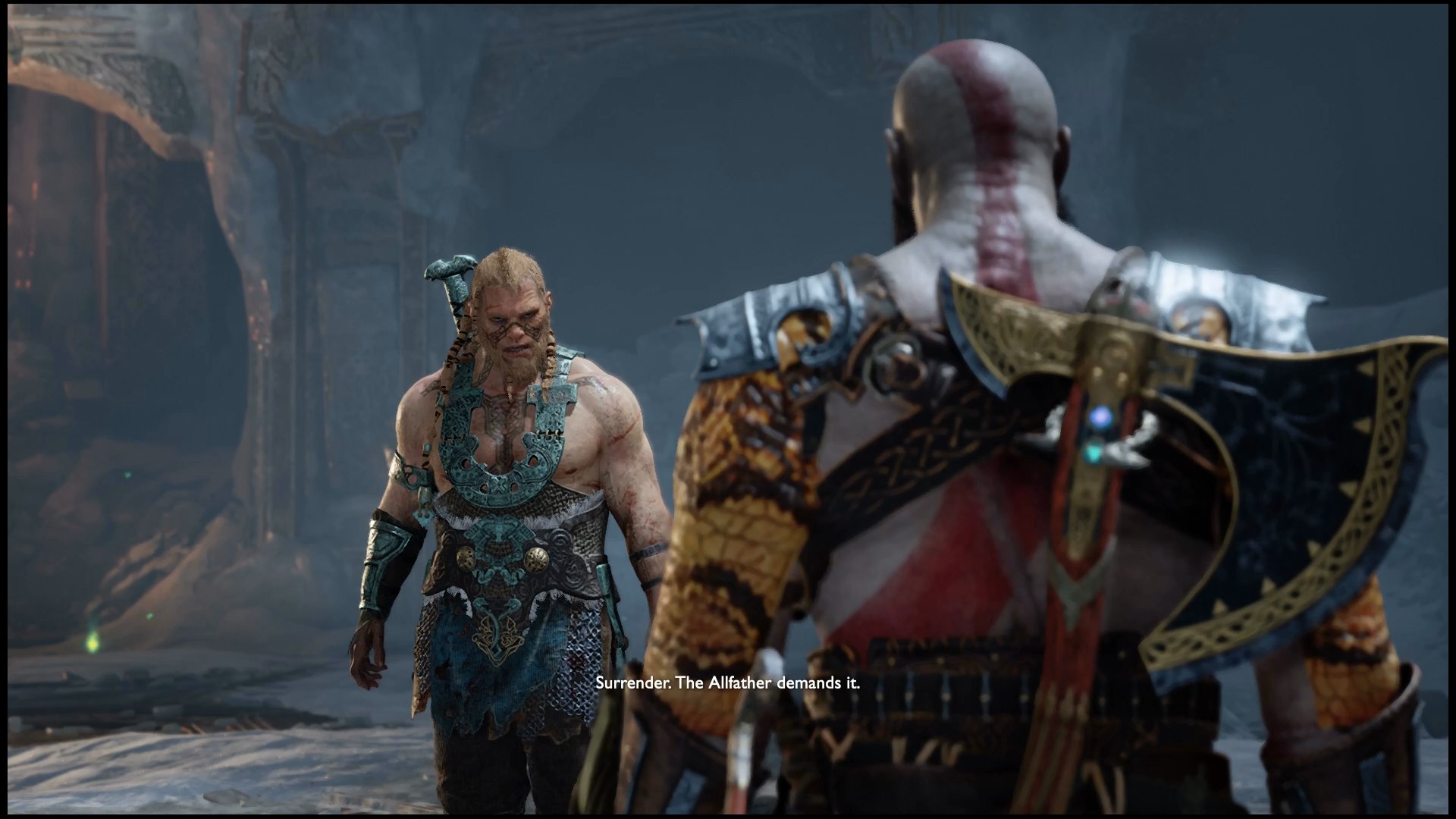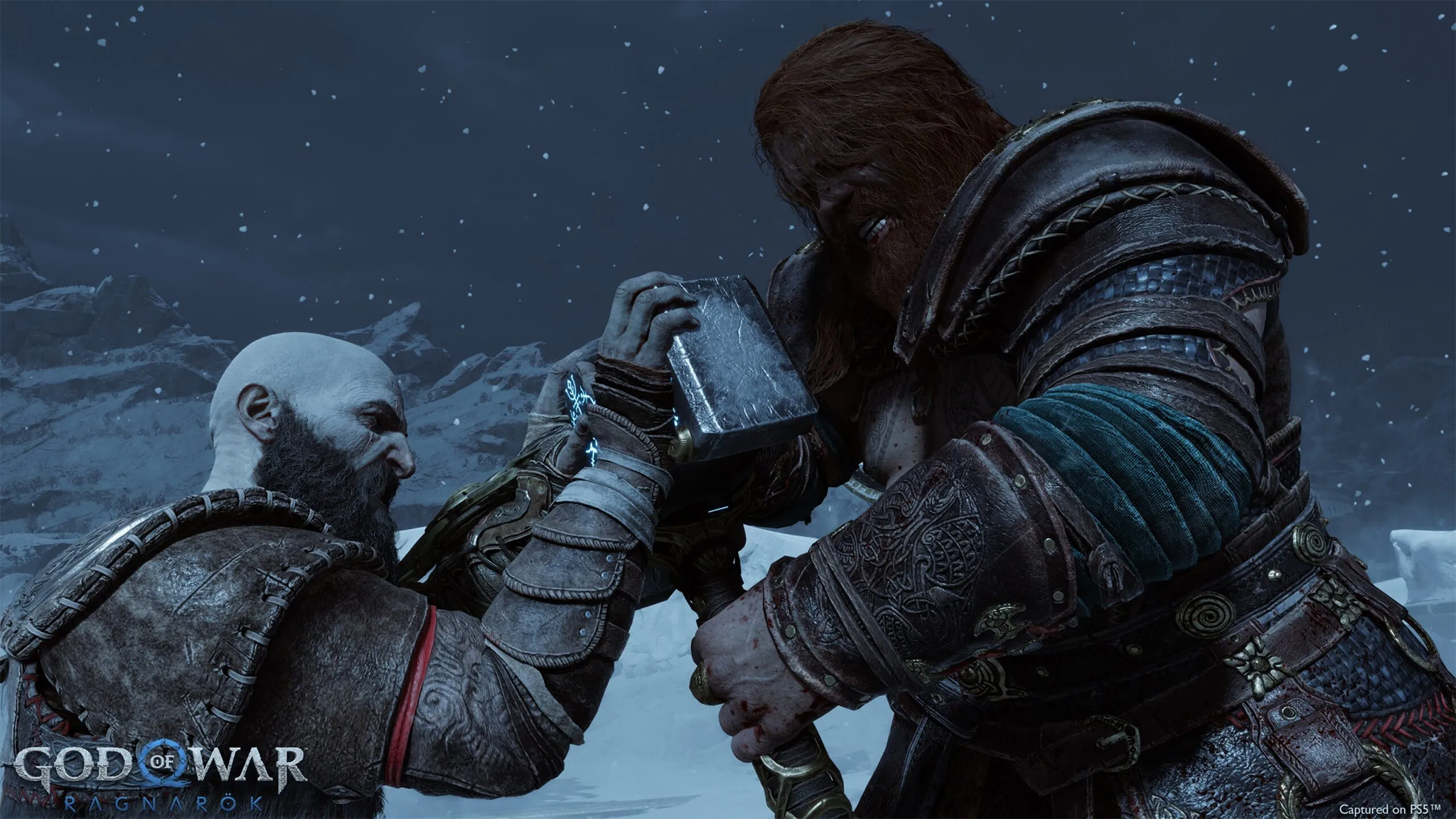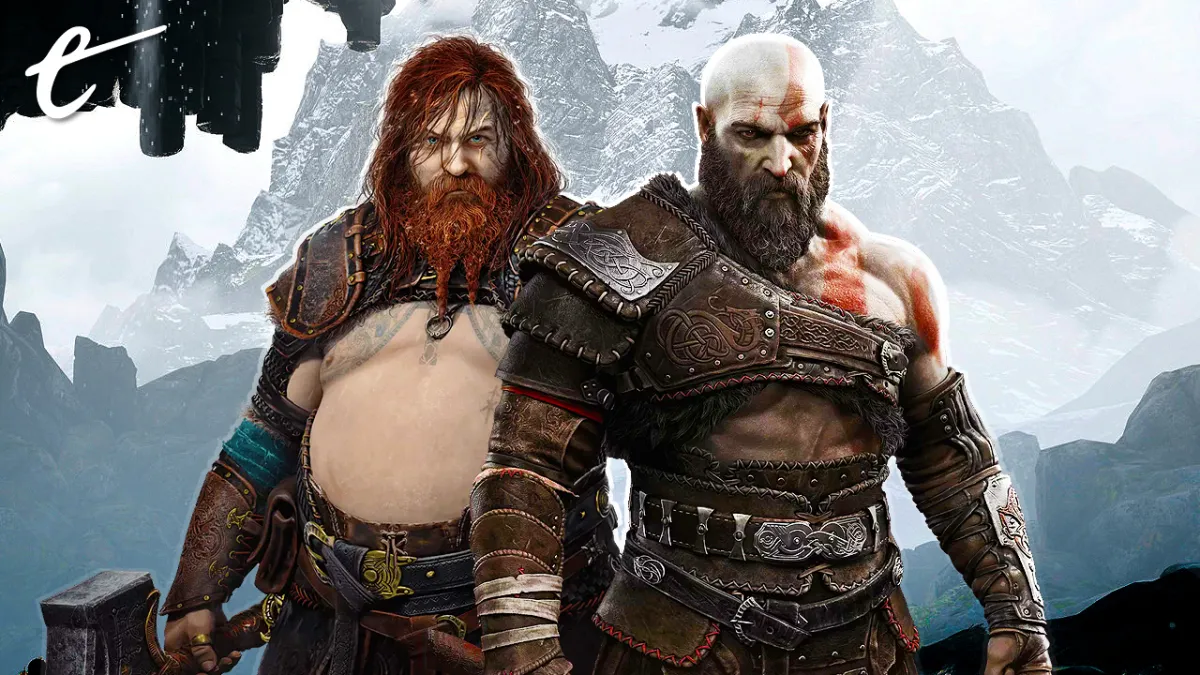However they pan out, Kratos’ inevitable confrontations with Thor and Odin in God of War Ragnarok promise catharsis. After playing through God of War 2018, it’s hard not to think that these two frontmen of the Norse pantheon deserve whatever vengeance is heading their way. Both loom over the events of God of War as figures who are, if not outright evil, then at least callous to the point that it makes no difference — and the game achieves that without ever needing them to appear.
In doing so, Santa Monica Studio joins a long lineage of creatives to give power to their story through unseen characters.
One of the most potent examples of the technique in entertainment history has to be Sauron from The Lord of the Rings. He exists in the text as a poison for Middle-earth. From his domain of Mordor, he spreads a toxic influence that results in the fall of Minas Ithil, the corruption of Saruman, and the threat of destruction for all the Free Peoples. Despite that (and Peter Jackson’s films portraying him as a giant flaming eye), Tolkien never makes explicit whether Sauron even has a body during The Third Age. He certainly never appears, except as a vague awareness that turns towards Frodo whenever he wears the One Ring, yet his presence is palpable.
Tolkien achieves the effect by making sure all roads lead to Sauron, and God of War does something similar. The process begins quite early in the game, when Kratos and Atreus first row onto the Lake of Nine. From out of the mist looms a statue of Thor. Its appearance sparks a brief back-and-forth about the Aesir and and the dynamics of Kratos’ family, but its real purpose is to act as a brand. At the heart of the Lake of Nine is Tyr’s Temple, which acts as a kind of hub for the entire game. This means that Thor stands sentinel over the constant comings and goings of Kratos and Atreus (at least until Jörmungandr awakens). The statue literally establishes Thor as a larger-than-life figure, yet beyond a vague sense of awe, neither the characters nor the player feels anything about it. At this point, there’s no mystique.

It isn’t until the game starts to delve into — and more importantly, rewrite — Norse mythology that we start to get a feel for who Thor and Odin are in God of War. As Kratos and Atreus explore the realms, they come across Jotnar Shrines that recount the heroic tales of the Aesir. They portray one view of history, but God of War employs a kind of recursive mythopoeia through Mimir. Established myths are interrogated and reimagined to fit within the framework of the saga.
The story that most sticks in my mind is that of the Giant Hrungnir. The myth the shrine tells is that of a battle, where Hrungnir fought the Aesir before being toppled by Thor. This history told by Mimir is quite different. Odin is portrayed as something of a sadist, prompting aggression from Hrungnir, while Thor may well be sociopathic in his immediate decision to slay the Giant. It’s a dynamic that plays out over and over in Mimir’s stories — in the binding and torture of Mimir himself and in the tale of Odin and Thor’s reputational and physical destruction of Starkaðr, among others.
The casual cruelty described across the stories in God of War is enough to paint Thor and Odin as deserving of punishment. Even so, it lacks any direct connection to what we see and feel through the game. That’s why those negative portrayals remain peripheral.
To go back to The Lord of the Rings, Sauron’s threat is made tangible by the way he corrupts Saruman and chips away at Denethor’s resolve. These two subversions cause chaos across Middle-earth, enabling evil to gain a foothold in both Rohan and Gondor. We see the effects of Sauron’s influence. We see what he can do, and that makes us take him seriously.
It is likewise in God of War. Thor is the more present of the two Aesir, mostly because of the appearance of his sons, Magni and Modi. The two vie for Thor’s approval and believe that killing Kratos is key to earning it. Their quest backfires, however, when Magni is slain, causing Modi to flee. Thor’s response is to blame Modi and beat him until he can barely stand.

Now, Modi is no object of sympathy; throughout the game, he’s portrayed as a simpering idiot — not to mention creepy in his fixation on Atreus — but that only highlights the heinousness of Thor’s actions. There’s no mercy, no mitigation, no holding back. It juxtaposes against Kratos’ treatment of Atreus as blunt without ever being violent. Until that point, we’ve heard story after story of Thor’s bloodlust, and this scene reinforces all of that. It’s hard not to feel at least a little sorry for Modi, which inspires our ire towards Thor. And again, that’s achieved entirely through inference.
Meanwhile, Odin is the catalyst of all that occurs throughout the game. He is responsible for setting Baldur on Kratos’ trail yet has little other direct impact on events.
Nevertheless, Thor and Odin’s depravity underscores the ending. As the journey comes to an end in Jötunheim, we see the aftermath of their genocide. Shattered corpses of Giants litter the mountainous landscape. The peace of the moment emphasizes the horror of the view. Everything that you’ve seen and heard throughout the game leads to that moment, yet it still catches you off guard. Even the chaos that Kratos wrought in his previous life seems tame compared to the destruction on display.
The God of War series has always been about the cycle of violence. It’s a cycle that Kratos sought to break throughout the reboot. Over and over, Thor and Odin are shown to revel in the violence that Kratos has rejected. His character growth between the sagas juxtaposes the insecurity and immaturity of the Aesir, which we see both first- and second-hand.
Thor and Odin are mythic figures within the mythology. Those eyes-off portrayals mean they can be anything. We feel relief when we kill Magni, but sorrow when Thor beats Modi. We feel righteousness as Kratos tears through the Draugr and other miscellaneous adversaries of the Nine Realms, but horror at the aftermath of Jötnar genocide. Of course the contexts are different, but Sony Santa Monica makes us feel those things, alongside a growing disdain for Thor and Odin, because the developers know that our emotions can sometimes be more powerfully manipulated by things that are outside of our experience. In God of War, the echoes of violence are more impactful than images of violence.






Published: Nov 7, 2022 05:12 pm